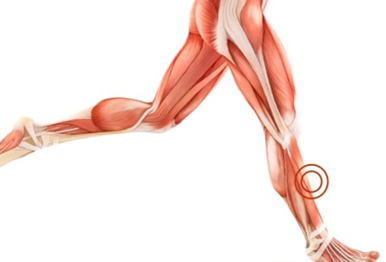
Agh!
Shin Splints
What are you to do? Rest and ice? Stretch the calves? Wear Braces at night? Give it a month and hope?
Hope is a crappy treatment plan and nobody has time to waste a month on hope. More than likely shin splints come right back when you start up again anyway if rest helped.
Rule #1 Rest isn’t typically the best treatment for these unless you are getting a Bone Reaction. Early stress fractures or what is called a periosteal reaction need rest. But resting because your shins are some at the start of track season, c’mon! Let’s fix this!
The dreaded “shin splints” is a condition that most of us will have at least a few times in our sports career. This issue, when caught early enough, is usually painful but still at a low enough level that you can still get going and move. So what do you do when you have this?
First off, you need to understand the condition (or conditions.) There are about 20 different versions of shin splints and the name by itself means almost nothing.
“Shin Splints” just describes the area of the pain.
You may feel this issue throughout the inside, outside, top or bottom of the shin, sometimes across the entire bone. In any case, by the time you have the pain, you are already having a stress reaction. In fact, the medical term for this issue is “Anterior Tibial Stress Syndrome.”
The issue is fundamentally, a “Ratio Issue” of the giant muscle in the back, the calf, and the smaller muscles of the front, the tibialis group. The calf is strong and as you progress in speed, distance or demand it responds. You’re working it more and it works for you.
The tibial muscles in the front of the shin are different. These muscles are attached, not at two endpoints like most muscles but throughout the entire length of the bone. That’s why even a little issue can cause big problems. These muscles and especially the bony attachment holler loud when they are aggravated.
Most of the time, the actual issue causing the pain is that the calf muscle (on the back of the leg) is overworking. That’s right, the calf, not the area of pain is the culprit.
Not sold on the idea? Just think about it. Shin Splints come on as you increase mileage, demand, or speed…the calves have been asked to contract harder and longer. The anterior tib muscles (the ones screaming) are the antagonist of the calves, so as the calves continue to contract harder and stronger, the smaller anterior tib muscles are getting pulled.
They are elongated and overstretched. Don’t forget, they are attached along the whole length of the bone, so they start screaming, especially when they are called to use. They become very irritated and inflamed.
But just because the calves started the whole problem, doesn’t mean treating the calves alone will fix the issue.
The treatment, done correctly, is a multifaceted approach.
#1 Put out the fire, USE ICE. The old-school “Ice Massage Technique” seems to work best, even after nearly two decades of trying everything I could get my hands on. Iced shins just seem to heal faster!
Take an ice cube, hold it in a towel and run it in little circles along the area of pain. This method is way more effective than an ice pack but it’s messy and wet and not used often anymore. There is a lot of misleading data on ice with injury. Here’s my take. Even if it isn’t directly treating inflammation, the skin response to cold is great for pain. Heat is a poor decision.
#2 fix the ratio.
- Relax, massage, TB12, foam roll, increase pliability or stretch the calves. We need these to stop pulling so hard.
- While working on that don’t forget to contract the ant tib muscles. Shorten the overstretched muscles. This is easily done by walking on your heels. I prescribe walking three ways -toes out, toes in, toes straight. 10 steps each, multiple times per day. Working both muscles is the key to getting better faster. It is the HACK that we always talk about in the office.
- Helix style Voodoo Band Treatment: Also called flossing – this provides a HUGE “skin grab” and resets the body’s “map.” We’ve been having fantastic results with this over the last year.
- The last thing is the value of a good chiropractor. Certain bones in your foot and ankle are the attachment points for these muscles and adjusting them allows the muscles to get back to the correct tension much faster than Hope, rest, and wishing.
At my clinic, we also have some great tricks and release points for work with adjacent muscles (such as posterior tib, peroneus) and techniques that are geared to releasing adhesions that just work and are fast, so you may speed up recovery with a professional.
You may need to take time off if the issue becomes unbearable. The last thing you want is a stress fracture in this area. It happens so try to prevent it! Typically, if you haven’t responded well in a couple of weeks or the issue is getting worse, a bone scan or further imaging should be ordered.

